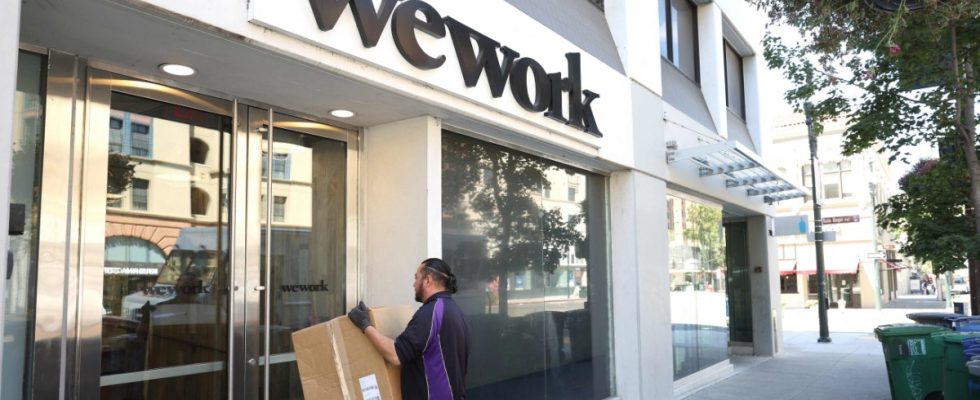When it was over for him, Adam Neumann finally admitted: The matter must have gone to his head. His company WeWork was worth $47 billion when he wanted to go public in October 2019. But the plan fell through, and at the end of the year there were only seven billion left. Jamie Dimon, head of the lending bank JPMorgan Chase, urged Neumann to give up the post. No wonder, because the crash was like that New York Times put it, “the biggest implosion in start-up history”. And now Neumann’s successor recently had to announce that it was no longer certain whether the company could continue to exist in the future.
For a long time, WeWork was an up-and-coming start-up and Neumann was the prototype of the boundlessly self-confident founder.
Can perform very convincingly: Adam Neumann.
(Photo: Eduardo Munoz/Reuters)
The business principle is very simple: WeWork rents office buildings or floors, spruces them up and then rents them out at a higher price. To freelancers, to people who find it difficult to work from home, or to small start-ups that don’t yet have their own office. A chic glass look, plus free craft beer and mate, initially attracted many to the WeWork offices. There were more and more of them all over the world. Neumann, who was very persuasive, had no trouble raising money. Money he needed to rent more and more premises.
But the business model didn’t work. And investors were starting to get nervous. The start-up had accumulated huge losses, amounting to almost two billion dollars in 2018 alone. After the aborted IPO that put thousands of WeWork employees out of work, things continued to go downhill. The Japanese Softbank group, one of the investors, took over WeWork. The company was still unsuccessful – to which of course the corona pandemic also played its part.
Questionable business model
The business model was questionable even before that. In good times, it’s almost a sure-fire success. But in bad? In bad times, WeWork had to continue to pay the rent, but the income failed due to a lack of customers. Aswath Damodaran, an economics professor at New York University, said the new York Times, he was “skeptical from the start”. Finally, WeWork’s business model is also easy to copy. There are now many providers who offer different rental jobs. WeWork’s financiers were less cautious. Only when potential investors took a closer look at WeWork on the occasion of the planned IPO did doubts arise – the IPO had to be called off.
In January 2018, all was right with the world for WeWork co-founder and CEO Adam Neumann. But the IPO, which he (middle of the picture, black T-shirt) is celebrating with employees, was canceled – and he himself was sawed off.
(Photo: Mark Lennihan/AP)
And now, following a legal obligation, the company had to publish a statement stating that there could be no guarantee that the company would be able to continue business operations in the future. Companies usually do this when it is foreseeable that they will become insolvent within a year.
But that doesn’t necessarily mean that the end is near. Because the official commitment allows WeWork to negotiate better conditions with landlords. Ultimately, they have no interest in losing this major customer and having to rent everything out again or losing a lot of money in bankruptcy proceedings. Especially in these times when a lot of office space is unused anyway. In the US alone, a fifth of all office space is said to be vacant.
In any case, it didn’t pay off for investors to put money into the company. When WeWork finally went public in 2021, the issue price was EUR 11.70. Now the papers are bobbing around at 14 cents – that’s damn close to total loss. And a world away from the $47 billion that Adam Neumann once dulled.

